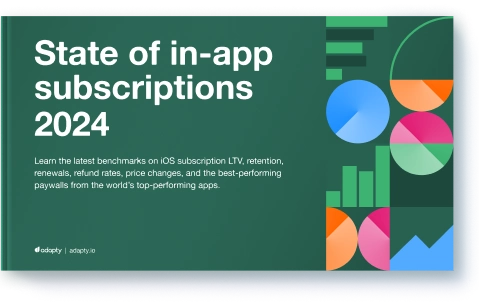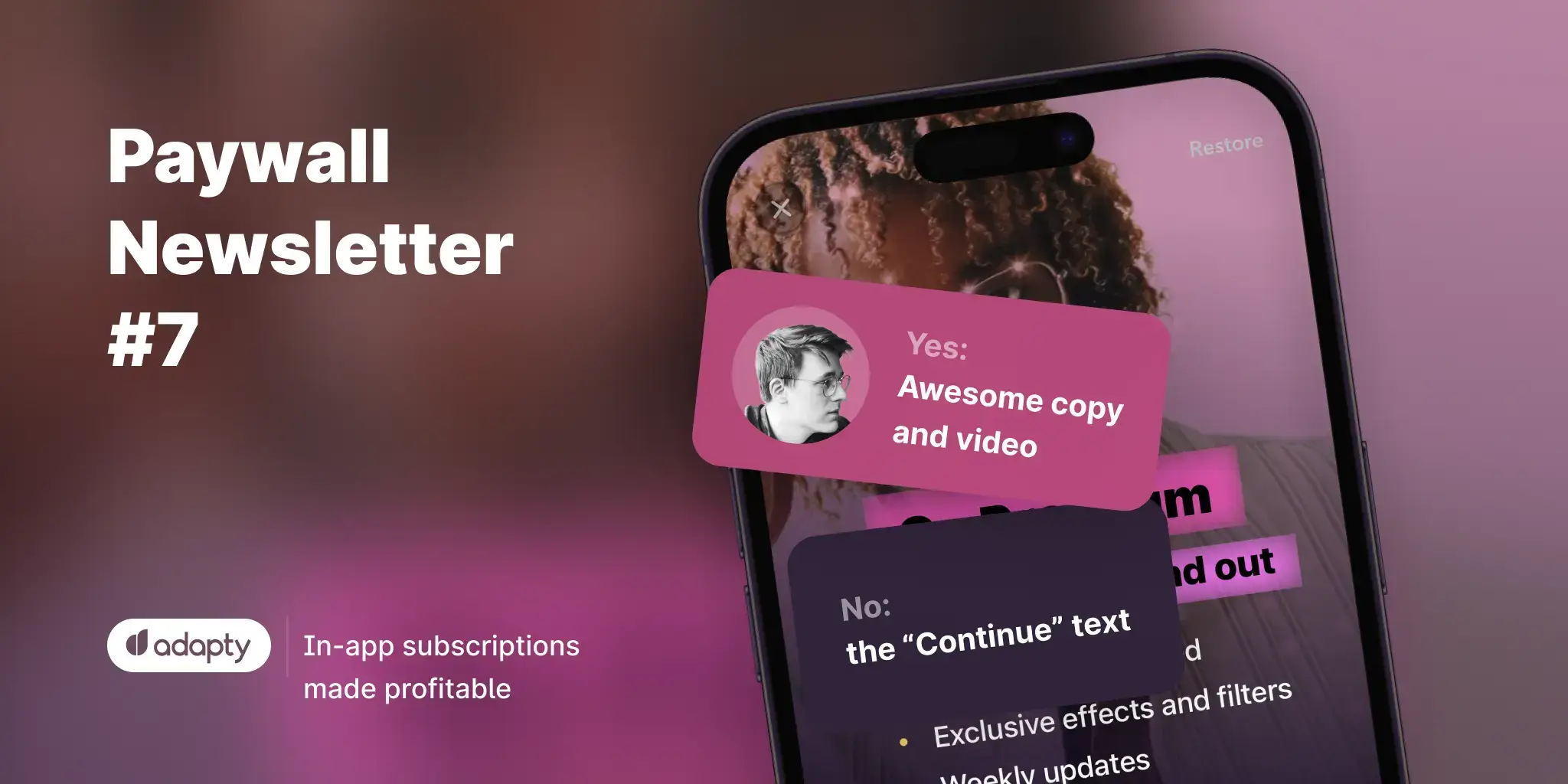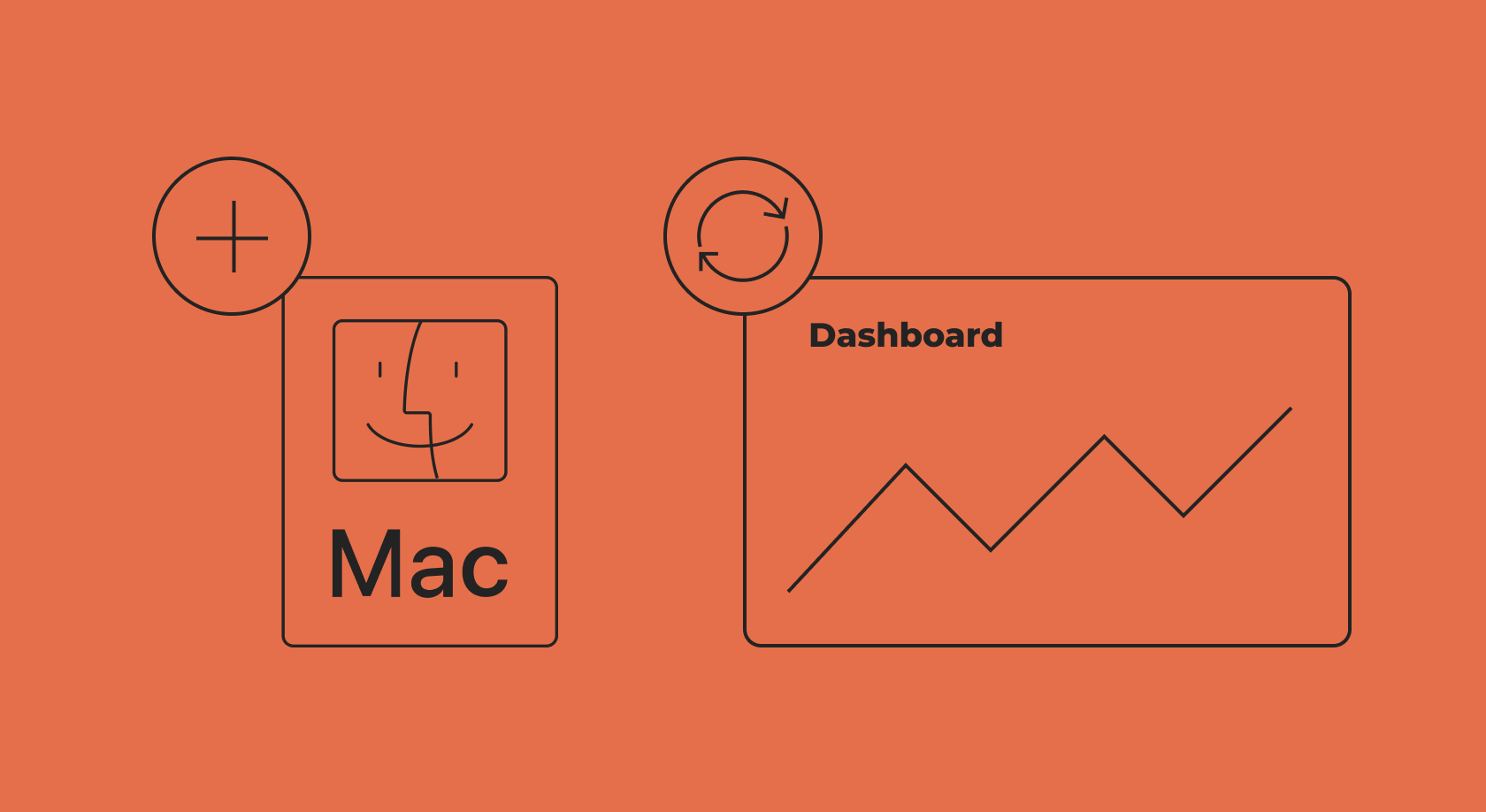7 monetization models for mobile games

July 10, 2024
20 min read

Apps are a business — and a great one at that. Games are a stand-alone industry, responsible for more than a half of all revenue generated in App Store and Google Play Store combined. Even compared to PC gaming, the market is enormous — it’s already valued at more than $ 100 BLN in 2024, and is about to double in the next 10 years.
All this moneyshake brings a lot of developers to the yard. But creating a game is one thing — making it profitable is a whole other level (pun intended). In this guide, we present top 7 monetization strategies for mobile games and advise on which one is better suited to your needs. Keep on reading to learn more!
What is mobile game monetization?
There are many strategies to convert player engagement into revenue, ensuring the game’s financial success. As a developer, you can explore different methods such as in-app purchases (IAPs), where players buy consumable items like power-ups or permanent upgrades, and subscription models for ongoing benefits. Another popular approach is incorporating advertisements, including banner ads, interstitial ads, and rewarded video ads that offer in-game rewards for watching short videos. Each method has its unique advantages and challenges, and we will discuss most of them later in the article.
A well-chosen strategy not only covers development costs but also supports future updates and projects. That’s why you need to align the monetization method with player preferences to maintain a balance between generating revenue and ensuring a positive experience. Paying for the game (or in-game) should come naturally to the players and not feel like a chore.
Mobile game monetization models
1. In-app purchases
In-app purchases (IAPs) are a popular monetization strategy where players can buy virtual goods within the game. These purchases range from consumable items, such as extra lives, power-ups, and in-game currency, to non-consumable items like permanent character upgrades, new levels, and cosmetic enhancements. Players often make these purchases to enhance their gaming experience, progress faster, or customize their avatars. By offering a variety of items, developers can cater to different player preferences and spending behaviors.
With this approach, you can:
- provide a steady revenue stream as players continually purchase items to enhance their gameplay;
- allow the game to be free-to-play, attracting a larger audience and reducing the barrier to entry;
- enhance player engagement and retention by offering valuable and desirable in-game items.
Of course, there are challenges:
- you need to balance the game to avoid a pay-to-win scenario, which can lead to player dissatisfaction and attrition;
- you also need to ensure non-paying players still enjoy the game while providing enough incentives for others to make purchases.
Among successful games that use IAPs, you will definitely recognize Clash of Clans and Candy Crush Saga. Clash of Clans offers in-game currency and various resources to accelerate building and training times, while Candy Crush Saga sells extra lives and power-ups to help players progress through difficult levels. These games demonstrate how well-implemented IAPs can drive significant revenue while maintaining player engagement and satisfaction.
2. Subscriptions
The subscription model involves players paying a recurring fee to access premium content or features within a game. This model offers exclusive benefits, such as additional levels, characters, or ad-free experiences, enhancing the player’s overall enjoyment and engagement. By opting for a subscription, players can unlock a richer and more immersive gaming experience.
Advantages:
- Recurrent payments provide a steady and predictable income stream, allowing developers to plan and invest in future updates and improvements.
- Subscriptions can foster a sense of commitment and loyalty among players, as they are more likely to stay engaged with the game to get their money’s worth.
- Subscribers often receive exclusive content and features, leading to a more satisfying and comprehensive gaming experience.
- Offering a free tier with the option to upgrade to a subscription can attract more players initially, increasing the potential subscriber base.
Challenges:
- Convincing players to transition from free to paid subscriptions requires a lot of work and clear value propositions.
- You need to constantly keep subscribers interested with regular updates and new content
- Many games offer similar models, so players will inevitable choose between them
An example of this is Apple Arcade: not necessarily a game, but a gaming service that offers a wide range of premium games for a low monthly fee, providing an ad-free experience with exclusive titles. Clash Royale, a pure game, offers a season pass, which grants players exclusive rewards and progression boosts, enhancing their gameplay experience.
Managing subscriptions is a hustle — and a lucrative one if done right. Adapty helps subscription game app developers maximize their revenue through advanced tools and analytics.
With insights into user behavior and preferences, Adapty allows developers to optimize pricing strategies, enhance customer retention, and increase lifetime value. Our robust platform supports A/B testing of subscription offers, personalized promotions, and seamless integration with App Stores and UA services, enabling developers to effectively manage and grow their subscription revenue. Try it out today!
3. In-app ads
This is the most common monetization strategy: developers display ads within their games to generate revenue. Different types of ads can be utilized to suit various gameplay and user engagement scenarios.
Types of In-App Advertisements:
- Banner Ads: Small ads displayed at the top or bottom of the screen. They are less intrusive but often generate lower revenue compared to other ad types.
- Interstitial Ads: Full-screen ads that appear at natural transition points within the game, such as between levels. These ads are more engaging and can generate higher revenue, but they can also be more disruptive if not timed correctly.
- Rewarded Videos: Players watch short video ads in exchange for in-game rewards, such as extra lives, currency, or power-ups. This type of ad is highly effective because it provides value to the player and can increase engagement.
- Native Ads: Ads that blend seamlessly with the game’s content, often appearing as part of the game environment. These ads are less intrusive and can be more engaging since they match the look and feel of the game.
There are some benefits to this strategy:
- Ads allow the game to be free-to-play, attracting a larger audience.
- Multiple ad types can be used to maximize revenue potential.
- Many players are accustomed to seeing ads in free games, especially rewarded videos that offer in-game benefits.
And, of course, some challenges:
- Poorly timed or excessive ads can disrupt the user experience and lead to player frustration.
- Some players use ad blockers, which can reduce potential revenue.
- Ad revenue can be inconsistent and is often lower than in-app purchases or subscriptions, especially if the game has a small player base.
To integrate ads without disrupting the user experience, strategically place ads at natural breaks or transition points in the game to minimize disruption. Control the frequency of ads to avoid overwhelming players. Use rewarded videos to offer players valuable in-game rewards for watching, which can increase engagement and satisfaction. Regularly test ad placements and gather player feedback to ensure the ads are not negatively impacting their experience.
4. Hybrid monetization strategy
A hybrid monetization strategy basically combines all the strategies we mentioned so far to maximize a game’s earning potential. This approach allows you to cater to different player preferences and spending behaviors, ensuring a more robust and diversified income stream.
Benefits of Diversifying Income Streams:
- Increased Revenue Potential: By combining various monetization methods, developers can tap into different revenue sources, maximizing overall earnings. For instance, players who don’t make in-app purchases might still generate revenue by viewing ads.
- Player Choice: A hybrid strategy offers players flexibility in how they support the game. Some players may prefer to make purchases, while others might be more comfortable watching ads for rewards.
- Reduced Risk: Relying on a single revenue model can be risky. Diversifying income streams helps mitigate the risk associated with changes in player behavior, market trends, or platform policies.
- Enhanced Engagement: Offering different ways to access premium content or rewards can keep players more engaged. Rewarded ads, for example, can provide non-paying players with a way to progress, keeping them involved and satisfied.
Here are some examples:
- Clash of Clans uses a combination of in-app purchases and ads. Players can buy in-game currency and resources, but they can also watch ads to speed up building times or earn extra rewards.
- Candy Crush Saga employs in-app purchases for extra lives, power-ups, and moves, while also offering rewarded video ads for players to gain additional bonuses.
- PUBG Mobile utilizes in-app purchases for cosmetic items and battle passes, alongside occasional ads and event-based promotions to enhance the player experience.
5. Premium paid model
The premium paid model requires users to pay a one-time fee to download and play your game. This approach offers a straightforward monetization strategy, where players gain full access to all game content without the need for additional purchases or ads. It ensures a clear and direct revenue stream from each download, allowing you to focus on creating a polished and complete gaming experience without worrying about ongoing monetization tactics.
However, attracting users to paid games in a market dominated by free-to-play titles can be challenging. Players are often hesitant to spend money upfront without first experiencing the game. To overcome this, it’s important that you offer a compelling value proposition through high-quality graphics, engaging gameplay, and unique features that set your game apart. Strong marketing, positive reviews, and leveraging social media gaming communities also helps build anticipation and trust among potential buyers.
Many premium games have found significant success even when offering a price upfront. Monument Valley, Minecraft, The Room, and others have demonstrated that players are willing to pay for exceptional quality and unique experiences. Focus on delivering a standout product and effectively communicating its value to attract a dedicated audience willing to invest in a premium gaming experience.
6. Meta layer monetization model
The meta layer monetization model involves adding monetizable features outside the core gameplay, such as cosmetic items, battle passes, and social features. This approach enhances the overall gaming experience without affecting the fundamental gameplay mechanics. By offering optional content that players can purchase, you provide additional revenue streams while keeping the game enjoyable and fair for all players.
This model appeals to different player segments by catering to their diverse interests and spending habits. Casual players might appreciate cosmetic items that allow them to customize their avatars, while more dedicated players could be interested in purchasing battle passes that offer exclusive rewards and progression boosts. Social features, like guilds or chat functionalities, can also attract players who value community and interaction within the game, encouraging them to spend on features that enhance their social experience.
Examples of the meta layer monetization model in action include Fortnite, where players buy skins and emotes, and Call of Duty: Mobile, which offers battle passes with exclusive content. By integrating these monetizable features, you can boost revenue without disrupting the core gameplay, keeping both paying and non-paying players engaged and satisfied.
7. Sponsorships and collaborations
Sponsorships and collaborations with brands or other games can generate substantial revenue by leveraging the visibility and reach of your game. These deals often involve integrating branded content, exclusive events, or cross-promotions that enhance the gaming experience while providing financial support from the partnering brand. By incorporating well-known brands or popular games, you can attract new players and retain existing ones through unique, limited-time content that adds value to your game.
The benefits of sponsorships and collaborations extend beyond immediate revenue. Increased exposure is a significant advantage, as partnerships with established brands can elevate your game’s profile, attracting media attention and boosting downloads. These collaborations can also open the door to future partnerships, creating a network of opportunities that can sustain long-term growth. Additionally, aligning your game with respected brands can enhance its credibility and appeal, making it more attractive to potential players and investors.
Successful examples of sponsorship and collaboration deals in the mobile gaming industry include Angry Birds teaming up with the movie Rio, which resulted in a special edition game that promoted both the film and the game. Another example is Pokémon GO collaborating with brands like Starbucks and McDonald’s, turning their locations into in-game PokéStops and Gyms, driving foot traffic to these businesses while enhancing the gaming experience. These partnerships illustrate how strategic collaborations can benefit both parties, creating a win-win situation that drives revenue and engagement.
2024 subscription benchmarks and insights
Get your free copy of our latest subscription report to stay ahead in 2024.
How much money can you make with a mobile game?
In 2024, the global mobile gaming market is projected to reach approximately $100.54 billion, reflecting a continued growth trajectory influenced by increasing smartphone penetration and the adoption of 5G technology. This growth is expected to further accelerate, with the market forecasted to expand to $165.64 billion by 2029, driven by advancements in technology and rising player engagement.
Several factors influence the earnings potential of your mobile game. The game genre plays a significant role; for example, strategy games and RPGs tend to generate higher revenues due to their engaged player base willing to spend on in-app purchases. Your target audience is also important; understanding their preferences and spending habits can help tailor your monetization strategies effectively.
Marketing efforts can’t be overlooked. A strong marketing campaign can significantly boost visibility and downloads, translating to higher revenue. Leveraging social media, influencers, and app store optimization are key components of successful marketing.
To see the size and the powers of the market, look at its top players. In 2023,
- Honor of Kings led the pack with an astounding $2.6 billion in revenue, primarily driven by its in-app purchases and extensive player base.
- PUBG Mobile followed closely with $2.3 billion, benefiting from its combination of battle passes, in-app purchases, and event-based monetization.
- Genshin Impact earned a remarkable $1.9 billion, thanks to its gacha system and regular content updates that kept players spending.
- Candy Crush Saga continued its dominance in the casual gaming market with $1.6 billion, largely from in-app purchases of extra lives and boosters.
- Lastly, Roblox generated $1.4 billion, capitalizing on its unique user-generated content model and in-game currency purchases.
These figures highlight the diverse and lucrative monetization strategies employed by top-performing mobile games.
How to choose the right monetization model for your mobile game
Among the seven models we have discussed so far, you’d be probably better off combining several of them. Here’s how to choose the correct strategy.
Factors to Consider
Game Type:
- Casual Games are often suitable for ad-based models due to their broad audience and frequent short play sessions. Examples: Candy Crush Saga, Flappy Bird.
- Mid-Core/Hard-Core Games, such as strategy or RPGs, typically benefit from in-app purchases and subscriptions due to their engaged and invested player base. Examples: Clash of Clans, Fortnite.
- Puzzle and Educational Games can effectively use a combination of ads and in-app purchases to balance user experience and revenue. Think Monument Valley, Duolingo.
Target Audience:
- People in lower-income countries are more receptive to ad-based models and rewarded videos, like in the game Angry Birds.
- Tier 1 countries’ players are more likely to spend on in-app purchases and subscriptions, especially for premium content; think Minecraft or Pokémon GO.
Competition: Analyze top-grossing games in your genre to understand their monetization strategies, determine what your competitors are doing well and identify gaps you can exploit.
Making Your Decision
- Define Your Game’s Core Experience: What is the main draw of your game? Ensure that your monetization model enhances rather than disrupts this core experience.
- Understand Your Audience: Conduct surveys or beta tests to gather data on your players’ preferences and spending habits.
- Evaluate Monetization Options:
- In-App Purchases are best for games with in-depth progression and customization.
- Ads are ideal for casual games with high user engagement and frequent play sessions.
- Subscriptions are suitable for games with regular updates and exclusive content.
- Balance Revenue and User Experience: Aim for a balance where monetization doesn’t frustrate or alienate players. Too many ads or aggressive in-app purchase prompts can drive users away.
- Test and Iterate: Implement A/B testing to refine your monetization approach. Gather feedback and make data-driven adjustments.
With a deep understanding of your game and its potential audience and by using this decision-making framework, you can select a monetization model that maximizes your profits while still keeping the app engaging. Remember to continuously test and refine your approach to find the optimal balance between revenue and user satisfaction.
How to boost your mobile game monetization
Optimize User Experience. Make sure your game is smooth and fun to play. Focus on easy-to-use design and minimal disruptions. For example, Candy Crush Saga uses ads and in-app purchases without interrupting gameplay, making it easy for players to spend money naturally.
Implement Data-Driven Decisions. Use data to understand how players behave and what they like. Analyze this data to improve your monetization strategies. Clash of Clans regularly tweaks its in-app purchases based on player activity to boost engagement and revenue.
Run Effective Marketing Campaigns. Invest in marketing to attract and keep players. Use social media, influencers, and app store optimization. Pokémon GO runs successful location-based events and partnerships, like with Starbucks, to increase player engagement and spending.
Continuously Update with New Content. Keep your game fresh with regular updates. Add new levels, characters, or events to keep players interested. Fortnite is great at this, frequently adding new skins and game modes to keep players coming back and spending money.
Offer Multiple Monetization Options. Use a mix of monetization methods to appeal to different players. Combine in-app purchases, ads, and subscriptions. PUBG Mobile effectively uses a mix of cosmetic purchases, battle passes, and ads to maximize revenue from a wide audience.
Follow these strategies to improve player engagement and increase your game’s profitability.
And if you choose to monetize your game with a subscription, we at Adapty are here to help you supercharge your strategy and improve revenue.
.
Recommended posts







